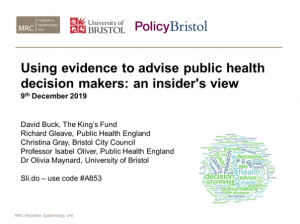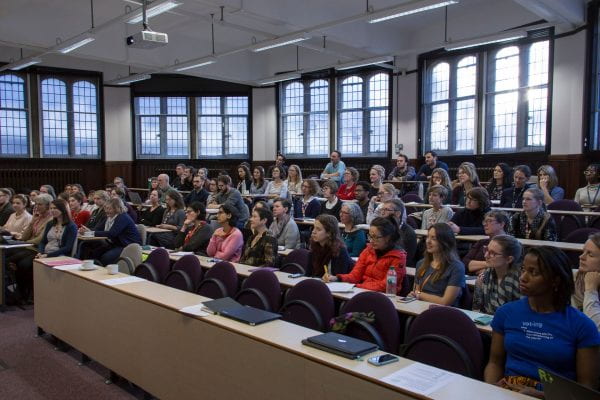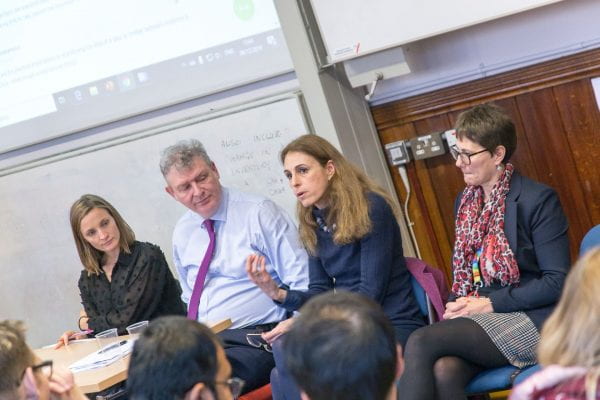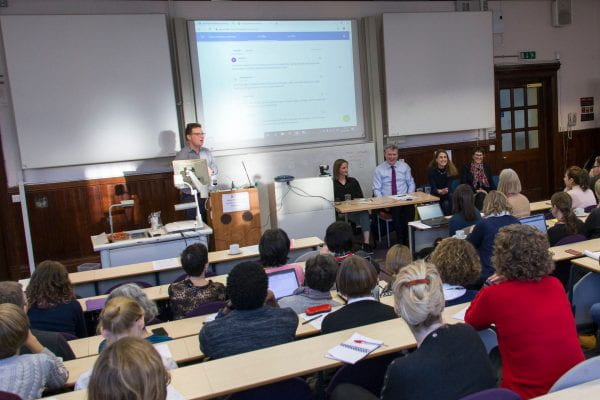by Olivia Maynard

In a paper recently published in the journal Addiction, Hannah Charles and colleagues suggest that the prevalence of illicit drug use among 23-25 year olds in a Bristol-based birth cohort (ALSPAC) is over twice that reported in the Crime Survey for England and Wales (CSEW). The team propose that these figures reflect under-reporting in the CSEW, although they note that they may reflect higher levels of illicit drug use in Bristol. Here I present some preliminary data supporting their view that the CSEW underestimates illicit drug use.
In March 2020, I recruited 683 UK university students to participate in a short survey on drug use via the online survey platform Prolific which has been shown to produce reliable data. I recruited only students aged 18 to 24 years who reported using alcohol in the past 30 days, and participants reported whether they had used any of MDMA/ecstasy, cocaine or cannabis in the past two years.
Table 1. Prevalence of self-reported illicit drug use across three surveys of young people in the UK
| University students via ProlificAged 18-24 |
Bristol, ALSPAC
Aged 23-25 |
CSEW
Aged 23-25 |
|||
| 2 years | 1 year | Lifetime | 1 year | Lifetime | |
| Any illicit drug usea | 52.7 (360) | 36.7 | 62.8 | 16.4 | 40.6 |
| Cannabis | 50.2 (343) | 29.2 | 60.5 | 13.8 | 37.3 |
| MDMA/ecstasy/amphetaminesb | 23.3 (159) | 17.0 | 32.9 | 3.6 | 11.1 |
| Cocaine | 21.1 (144) | 19.6 | 30.8 | 4.8 | 13.9 |
Notes: Values represent percentage of participants (number of participants). Percentages for CSEW and ALSPAC are taken from Charles et al (1) and are weighted percentages.
a ‘Any illicit drug use’ refers only to the illicit drugs assessed in the respective surveys (only cannabis, MDMA and cocaine in our survey), more drugs in ALSPAC and CSEW – see Charles et al (1).
b Our Prolific survey asked about ‘MDMA / ecstasy’ use, ALSPAC categorised ecstasy/MDMA use along with other ‘amphetamine’ use and CSEW asked about ‘ecstasy’ use.
Over half of my sample reported using at least one of cannabis, cocaine or MDMA in the past two years (Table 1). This is markedly higher than the CSEW’s estimates of either past year or lifetime use, and more in line with those reported in ALSPAC. Comparing across drugs, past two-year use of the three drugs is higher in my survey than either past year or lifetime use in the CSEW, and higher than past year, but lower than lifetime use in ALSPAC. Perhaps of more interest than ever use of the drugs over the past two years, I also examined the combinations of drugs students in my survey were using (Table 2). I find that the majority of students who report using illicit drugs have only used cannabis in the past two years (25% of all students), although the second largest group (15%) have used all three of cannabis, MDMA and cocaine.
Table 2. Prevalence of self-reported illicit drug among UK university students
| Qualtrics survey of university students (past two years) | ||||
| All (n=683) |
Female (n=336) |
Male (n=312) |
Other (n=35) |
|
| Illicit drug use | ||||
| Cannabis | 50.2 (343) | 48.5 (163) | 53.5 (167) | 37.1 (13) |
| MDMA / ecstasy | 23.3 (159) | 19.3 (65) | 29.2 (91) | 8.6 (3) |
| Cocaine | 21.1 (144) | 17.6 (59) | 26 (81) | 11.4 (4) |
| Illicit drug use profiles | ||||
| Alcohol only (no illicit drug use) | 47.3 (323) | 48.2 (162) | 44.6 (139) | 62.9 (22) |
| Any illicit drug usea | 52.7 (360) | 51.8 (174) | 55.4 (173) | 37.1 (13) |
| Cannabis only | 24.5 (167) | 27.4 (92) | 21.5 (67) | 22.9 (8) |
| Cannabis + Cocaine + MDMA | 15.4 (105) | 11.3 (38) | 20.8 (65) | 5.7 (2) |
| Cannabis + MDMA | 6.3 (43) | 6 (20) | 7.1 (22) | 2.9 (1) |
| Cannabis + Cocaine | 4.1 (28) | 3.9 (13) | 4.2 (13) | 5.7 (2) |
| Cocaine only | 0.9 (6) | 1.2 (4) | 0.6 (2) | 0 (0) |
| MDMA only | 0.9 (6) | 0.9 (3) | 1 (3) | 0 (0) |
| Cocaine + MDMA | 0.7 (5) | 1.2 (4) | 0.3 (1) | 0 (0) |
Notes: Values represent percentage of participants (number of participants).
‘Illicit drug use’ refers to participants reporting any use of the three drugs in the past two years.
‘Illicit drug use profiles’ refers to the combinations of drugs participants report using in the past two years.
a ‘Any illicit drug use’ refers only to use of cannabis, MDMA and cocaine.
There are some important differences between my sample and both the CSEW and ALSPAC samples. Some differences may mean that my figures are overestimates, including sampling university students who are more affluent than the general population (although drug use is not necessarily higher among students than non-students) and only including those who reported drinking alcohol (although according to the study authors, over 95% of the ALSPAC participants report past year drinking). Other differences may mean my figures are underestimates, including only asking about use of three drugs (thereby underestimating ‘any illicit drug use’), and the younger average age of my sample. I also report on past two-year use, rather than either lifetime or past year use as per CSEW and ALSPAC. Given these differences, I would like to run a larger, more representative sample on the Prolific platform (Prolific allows researchers to recruit a sample which is representative of the general population), to get an estimate of illicit drug use which is more comparable to ALSPAC and CSEW.
Despite these differences, my data support those reported by Charles and colleagues. Indeed, I find it unsurprising that illicit drug use is under-reported in the Home Office’s CSEW. The validity of self-reports for sensitive issues has long been a concern. Over-reporting of illicit drug use is not considered to be a concern and numerous methods have been developed for preventing under-reporting (see a 1997 NIDA report on this issue, as well as more recent techniques for estimating prevalence of use such as the crosswise method). It is important to consider the context in which surveys are administered, including participants’ perception of who is asking the questions and for what reason. It seems that if drug use is asked about in a research context, (e.g., with a clear research objective, informed consent and no possibility of repercussions), the validity of responses may be higher than when questions are asked by organisations that are perceived to be involved in the punishment of people who use drugs (e.g., governments, universities).
While the CSEW recognises that it does not reliably measure problematic drug use, my data and that of Charles and colleagues provide evidence that CSEW’s claim that it is a ‘good measure of recreational drug use’ may be wrong. Although it may be convenient to believe that only a small subset of the population uses illicit drugs, accurate information may galvanise policy makers (both nationally and locally, including at universities) into developing drugs policies that reflect reality and which support, rather than criminalise, the large proportion of the population who choose to use drugs. Indeed, this is what we’re doing at the University of Bristol, where it has been accepted that drug use is relatively common among our students and we’re providing support and education to those students who need it.
This blog posted was originally posted on the Tobacco and Alcohol Research Group blog




